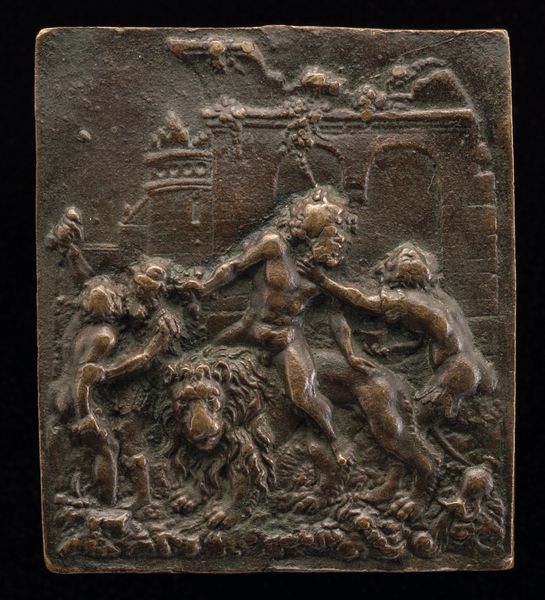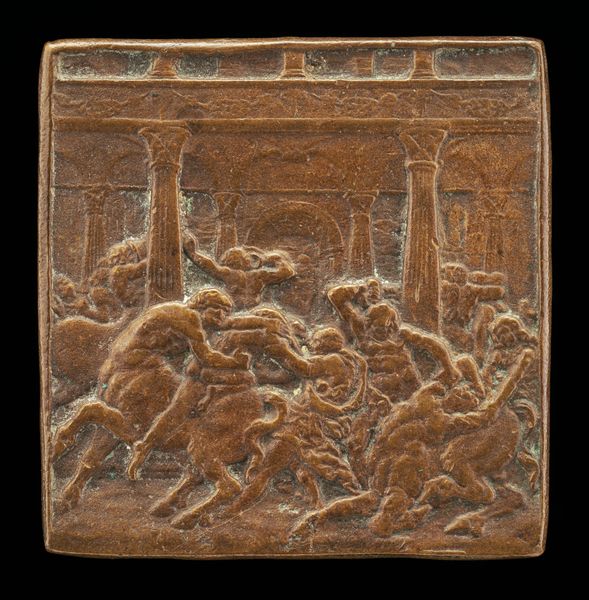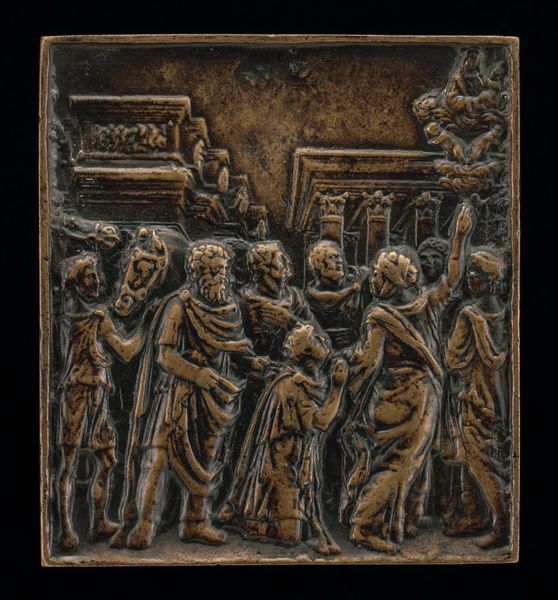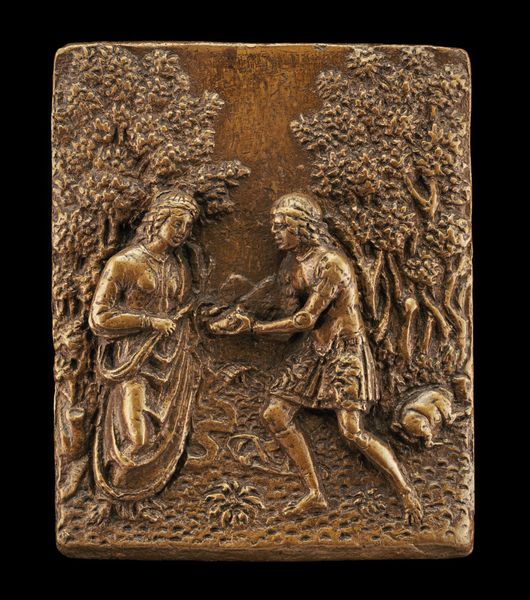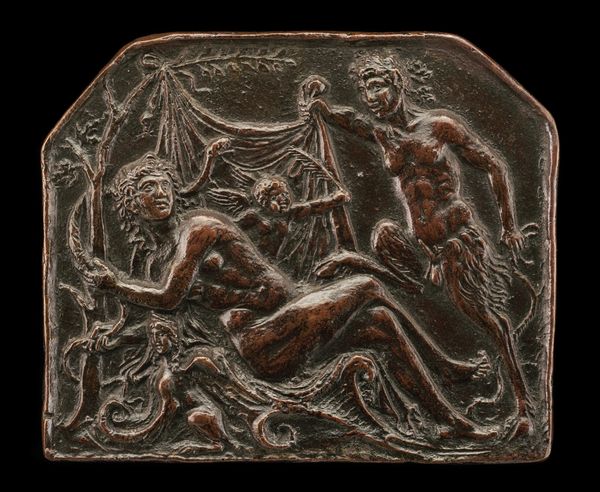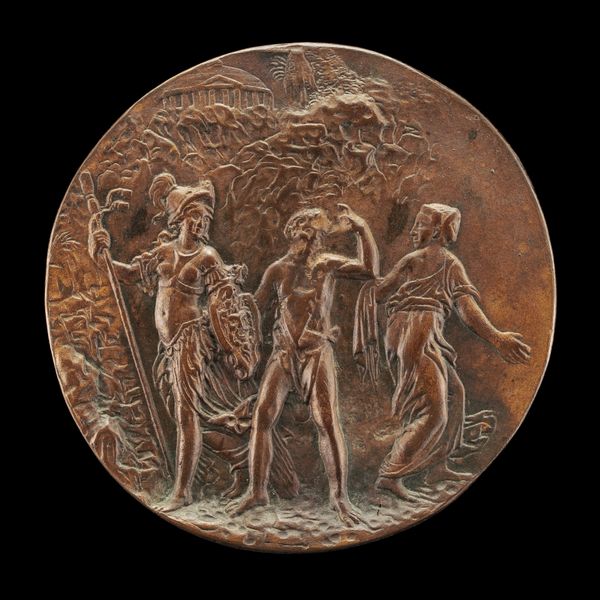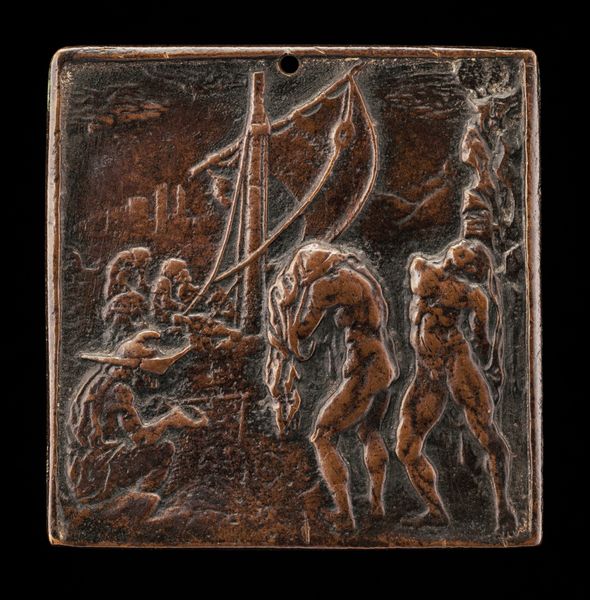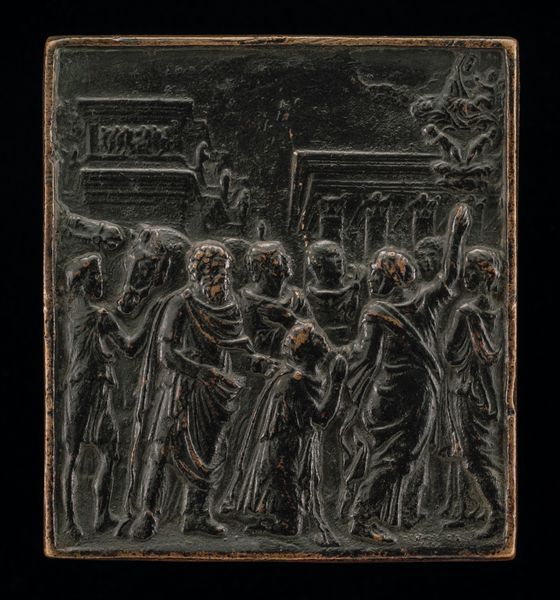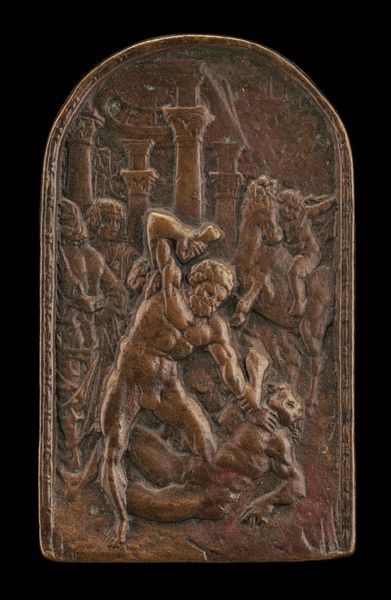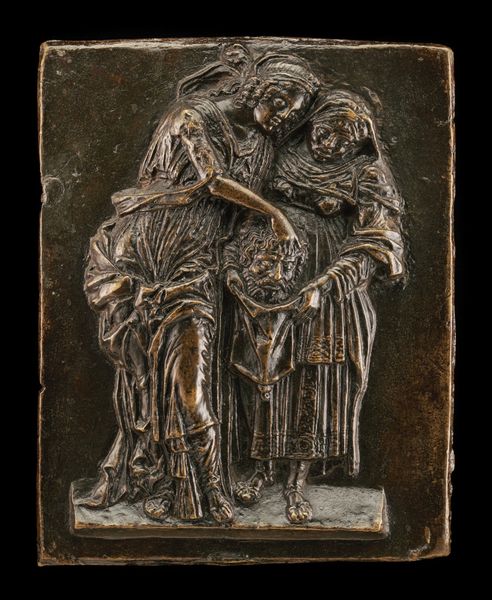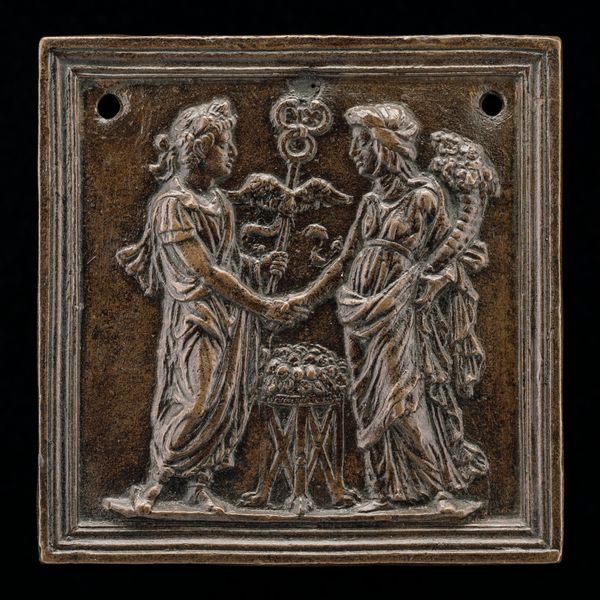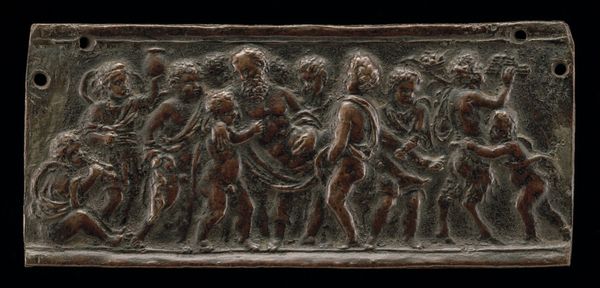
relief, bronze, sculpture
#
narrative-art
#
sculpture
#
relief
#
bronze
#
figuration
#
sculpture
#
history-painting
#
italian-renaissance
Dimensions: overall: 13.69 x 13.03 cm (5 3/8 x 5 1/8 in.) gross weight: 617.4 gr (1.361 lb.)
Copyright: National Gallery of Art: CC0 1.0
Editor: This bronze relief, "The Judgment of Paris," was created by Francesco di Giorgio Martini around 1475 to 1485. The figures have such serious expressions. What's your interpretation of this work? Curator: This relief presents a pivotal scene from Greek mythology ripe for discussion. What power dynamics do you observe, considering the gendered and social hierarchies inherent in the myth itself and likely amplified during the Italian Renaissance? Editor: I notice Paris is seated and appears to be handing something to one of the goddesses. The other two seem to be pleading their case. Is that relevant? Curator: Absolutely. This 'judgment' is less about aesthetics and more about the deployment of power, specifically male power in the act of evaluating and ranking women. How does Martini's depiction reinforce or perhaps subtly critique this act of judgement? Think about the roles available to women in this period. Editor: So it's not just a pretty story, it reflects on gender roles. Were Renaissance audiences aware of this commentary, or is this a more contemporary reading? Curator: The beauty of engaging with historical artwork lies in the layered readings available to us. A Renaissance audience, steeped in both classical mythology and the social realities of their time, likely would have been attuned to the power dynamics displayed. However, our contemporary lens allows us to foreground the inherent inequalities with a sharper focus, especially concerning female agency. What could this narrative suggest about contemporary beauty pageants, for example, and their reflection on social value? Editor: Wow, that is so interesting! I had only thought about the surface-level narrative. I now see there is more here. Thanks! Curator: Precisely. This shows us the power of art as a dialogue across time. Each new perspective allows us to reflect critically on our present, guided by insights from the past.
Comments
No comments
Be the first to comment and join the conversation on the ultimate creative platform.
